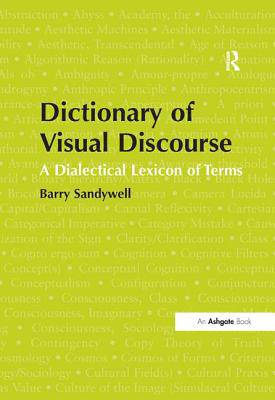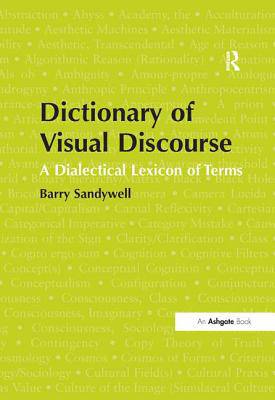
- Retrait gratuit dans votre magasin Club
- 7.000.000 titres dans notre catalogue
- Payer en toute sécurité
- Toujours un magasin près de chez vous
- Retrait gratuit dans votre magasin Club
- 7.000.0000 titres dans notre catalogue
- Payer en toute sécurité
- Toujours un magasin près de chez vous
297,45 €
+ 594 points
Format
Description
This substantial and ambitious dictionary explores the languages and cultures of visual studies. It provides the basis for understanding the foundations and motivations of current theoretical and academic discourse, as well as the different forms of visual culture that have come to organize everyday life. The book is firmly placed in the context of the 'visual turn' in contemporary thought. It has been designed as an interdisciplinary or transdisciplinary introduction to the vocabularies and grammars of visuality that inform thinking in the arts and humanities today. It also offers insight into the philosophical frameworks which underpin the field of visual culture. A central theme that runs throughout the entries is the task of moving away from a narrow understanding of visuality inherited from traditional philosophy toward a richer cultural and multi-sensorial philosophy of concrete experience. The dictionary incorporates intertextual links that encourage readers to explore connections between major themes, theories and key figures in the field. In addition the author's introduction provides a comprehensive and critical introduction which documents the significance of the visual turn in contemporary theory and culture. It is accompanied by an extensive bibliography and further reading list. As both a substantive academic contribution to this growing field and a useful reference tool, this book offers a theoretical introduction to the many languages of visual discourse. It will be essential reading for graduate students and scholars in visual studies, the sociology of visual culture, cultural and media studies, philosophy, art history and theory, design, film and communication studies.
Spécifications
Parties prenantes
- Auteur(s) :
- Editeur:
Contenu
- Nombre de pages :
- 722
- Langue:
- Anglais
Caractéristiques
- EAN:
- 9781409401889
- Date de parution :
- 21-03-11
- Format:
- Livre relié
- Format numérique:
- Genaaid
- Dimensions :
- 180 mm x 248 mm
- Poids :
- 1651 g

Les avis
Nous publions uniquement les avis qui respectent les conditions requises. Consultez nos conditions pour les avis.






